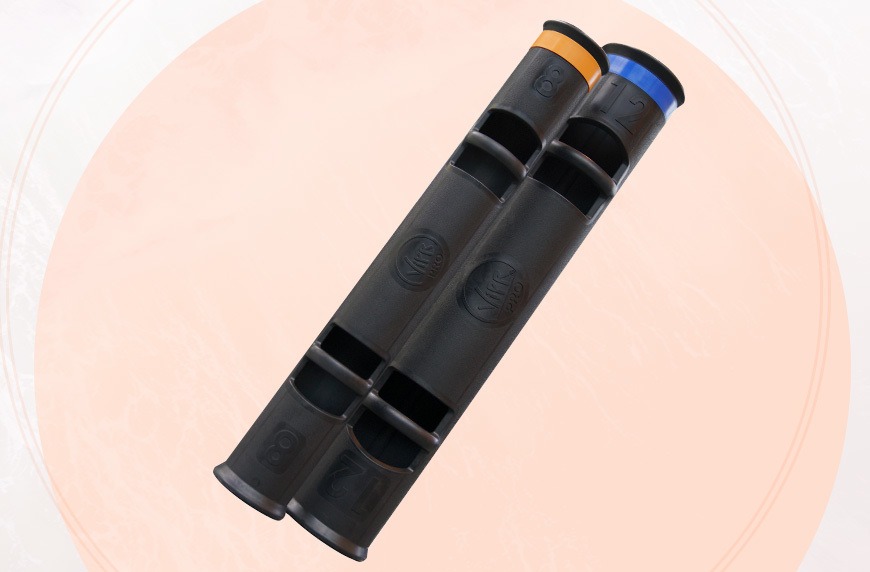
August 13, 2019 at 07:00AM by CWC
At my gym, there are these three-foot long horizontal tubes with cut-outs. They look like foam rollers, but are far from it. They’re actually not meant to help with recovery at all, they’re supposed to add some serious intensity to your sweat sesh. And boy, do they deliver.
In fact, the ViPR PRO—pronounced viper—made a plank series the hardest I’ve ever done. A personal trainer had me get down into a forearm plank with the ViPR perpendicular to my body, lying underneath my chest. I then had to maintain my plank position while pulling the ViPR horizontally to the side by the opposite hand (back and forth).
The product was made to help with whole-body integrated movements, including movements like the plank. “ViPR PRO is a great way to recruit type two muscle fibers or as a great introduction to strength training,” says Jan Hutnan, trainer and the brand’s account coordinator. “The product’s length and diameter allow the user to modify their leverage over the device, offering numerous ways to challenge the person.”
ADVERTISEMENT
ADVERTISEMENTKate Spade Autumn/Winter Sale |
Master trainer and professional bodybuilder Branko Teodorovic of FlexIt also says the ViPR is great for full-body movement that also incorporate balance. “The ViPR is generally safer for key joints, especially your shoulders,” he tells me, pointing out that it works like a barbell, but has vertical grips. “Those vertical grips help make ViPR a safer tool for your shoulder joints.”
For the more specifics on how to actually use it, Teodorovic says it pairs well with twisting motions, side presses, lateral movements, and static holds, so you can basically use it for all of your strength training moves.
Try this full-body ViPR workout, courtesy of the pros, below.
1. Lying or standing chest press: Hold the ViPR parallel to the body, and apply two forces: up and against the ViPR for maximal chest activation.
2. Standing core twists: This will work your shoulders, obliques, and glutes. Swing the ViPR from one side to another as your body twists.
3. Squat or lunge: Do either lower body move while pressing the ViPR from one shoulder to another. The ViPR should follow your front leg.
4. Seated Russian twists: Balance on your glutes and twist with the ViPR from side to side.
5. Burpees: Hold a ViPR with the vertical grip handles and press it overhead during the jump phase.
Also a useful workout tool? The medicine ball—here are some full body exercises to do with that. Also, here’s a Bosu ball workout to try (on another day).
Author Rachel Lapidos | Well and Good
Selected by CWC
ADVERTISEMENT
ADVERTISEMENTUp to 30% off Gift Sets |







